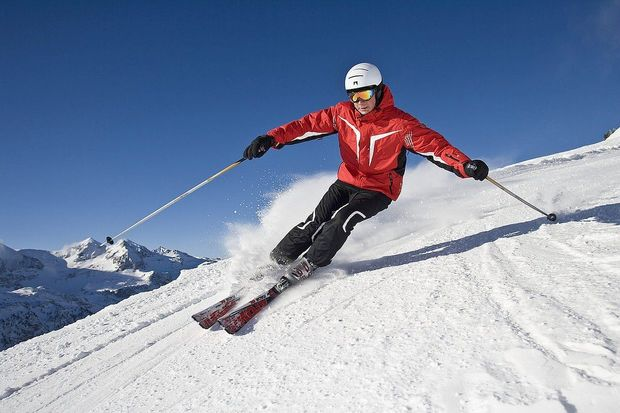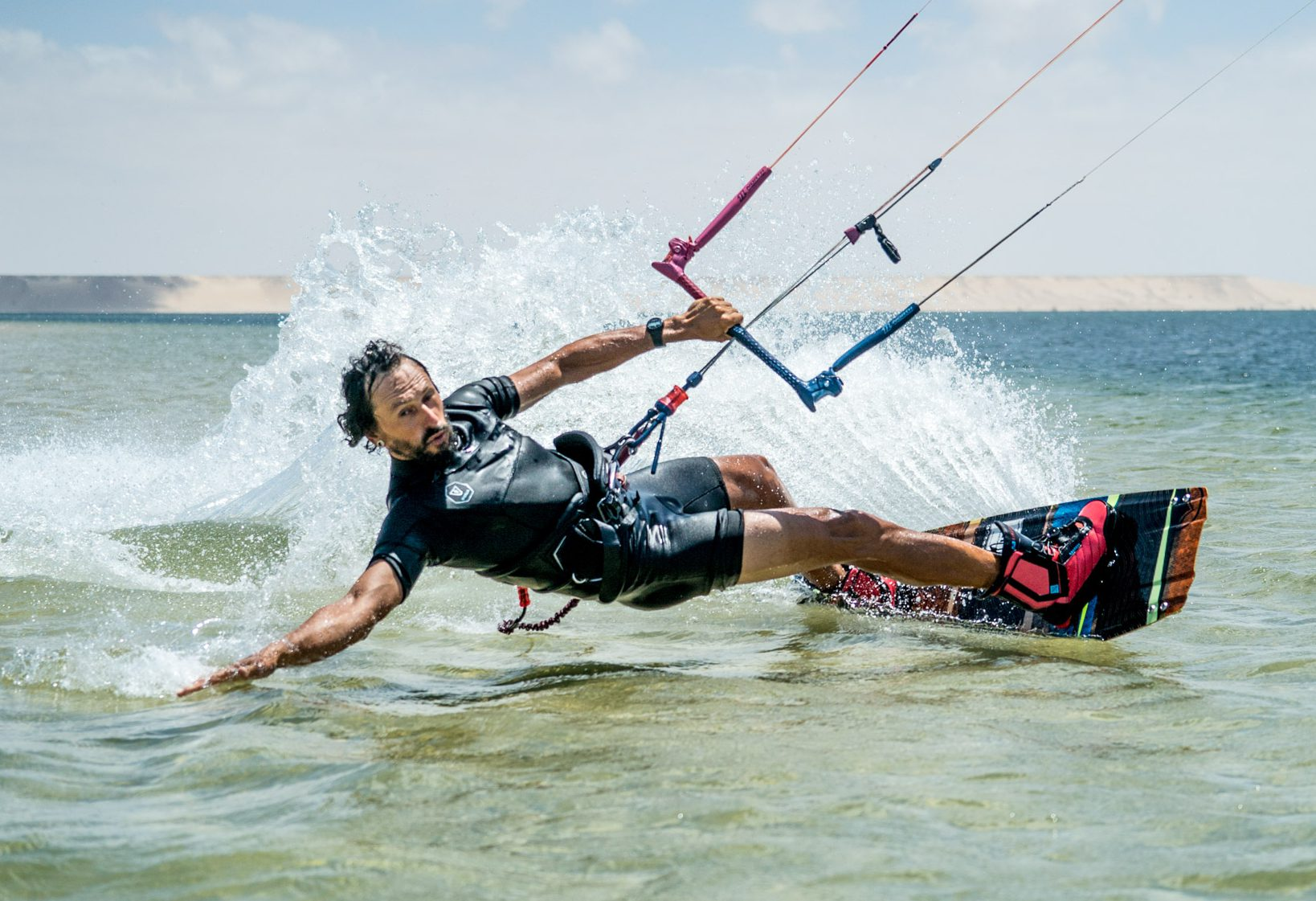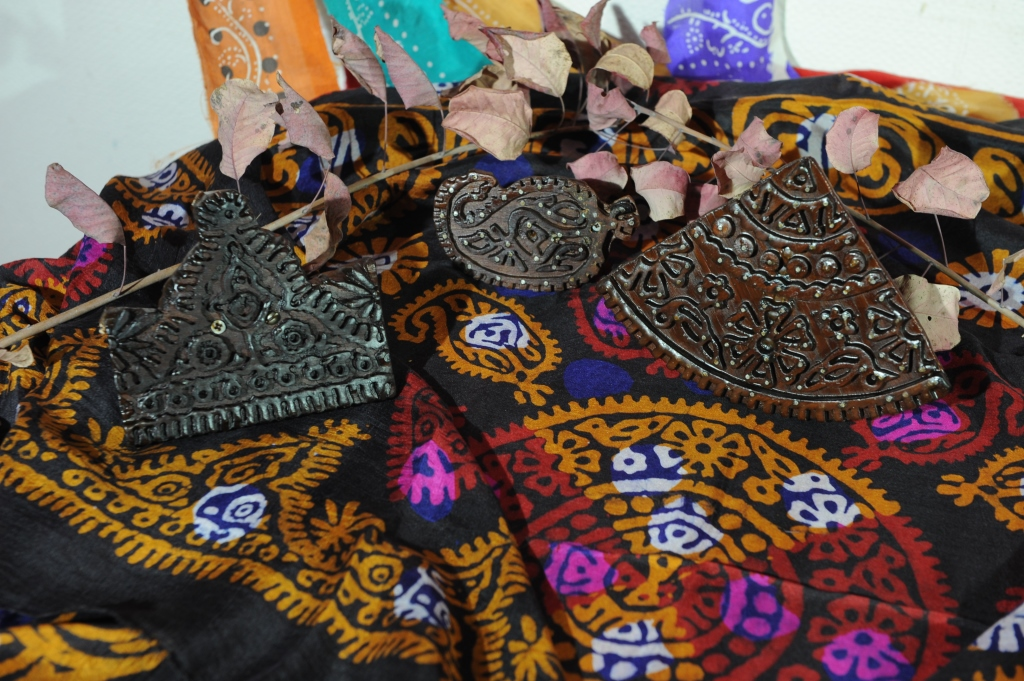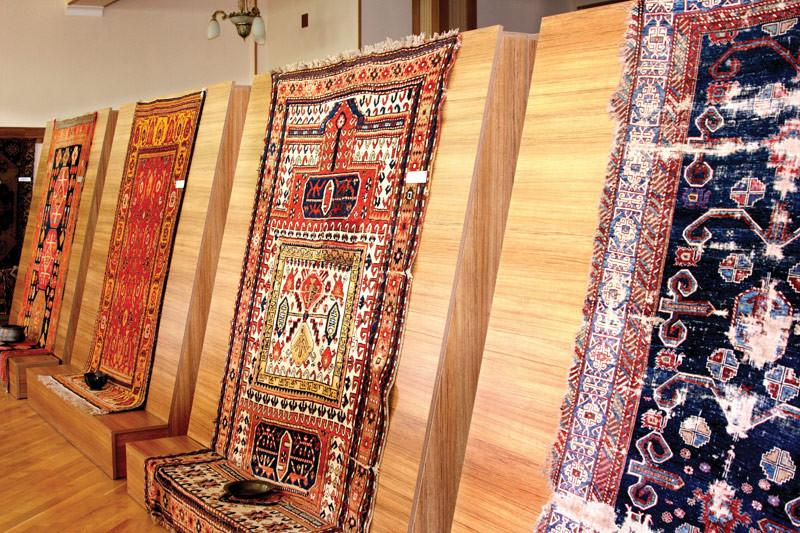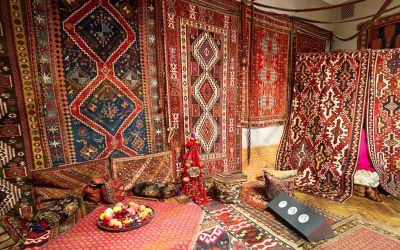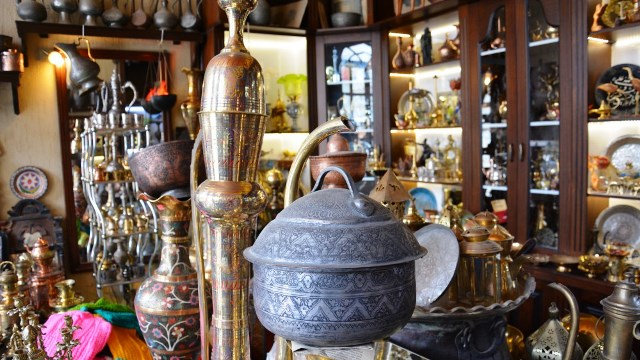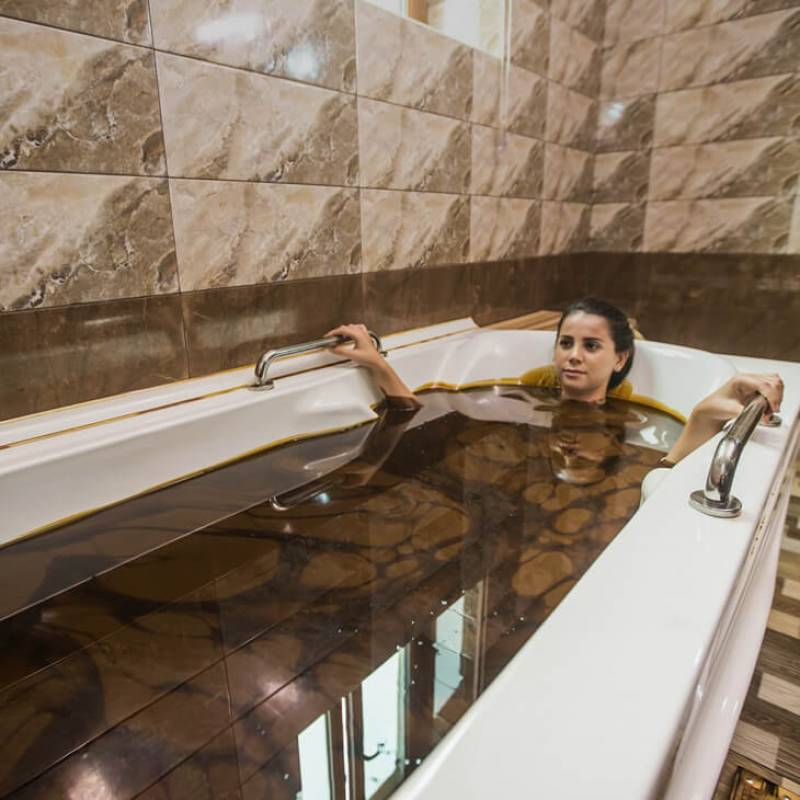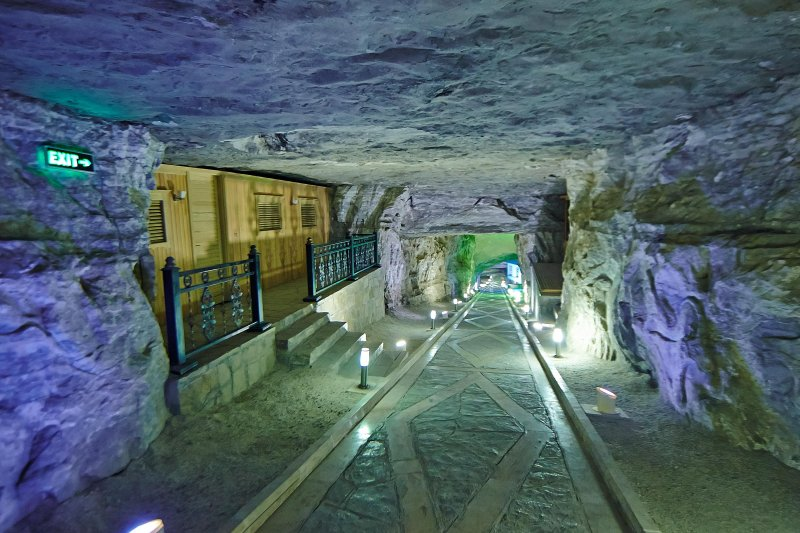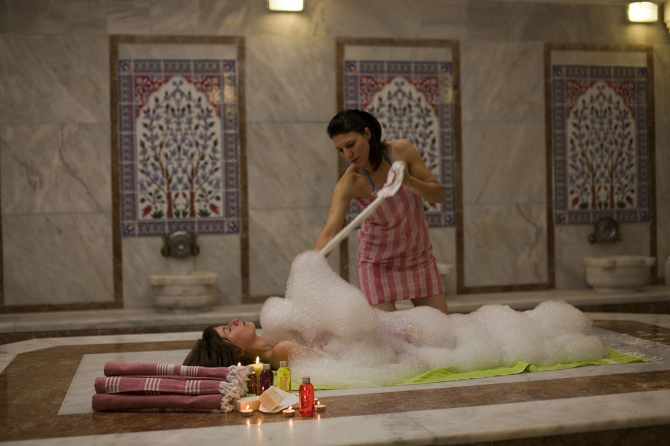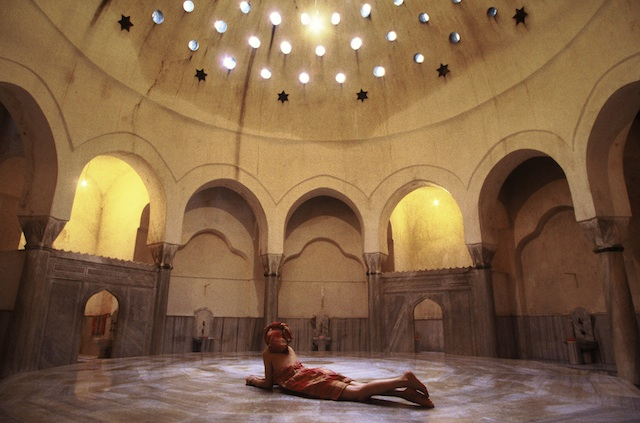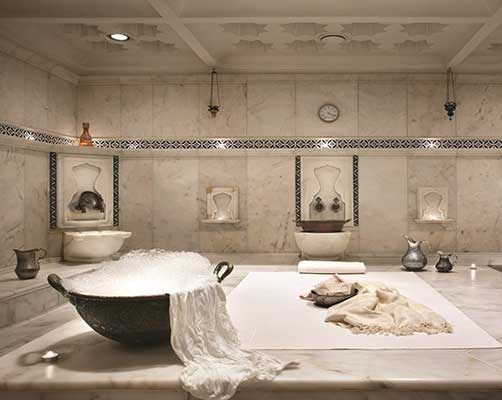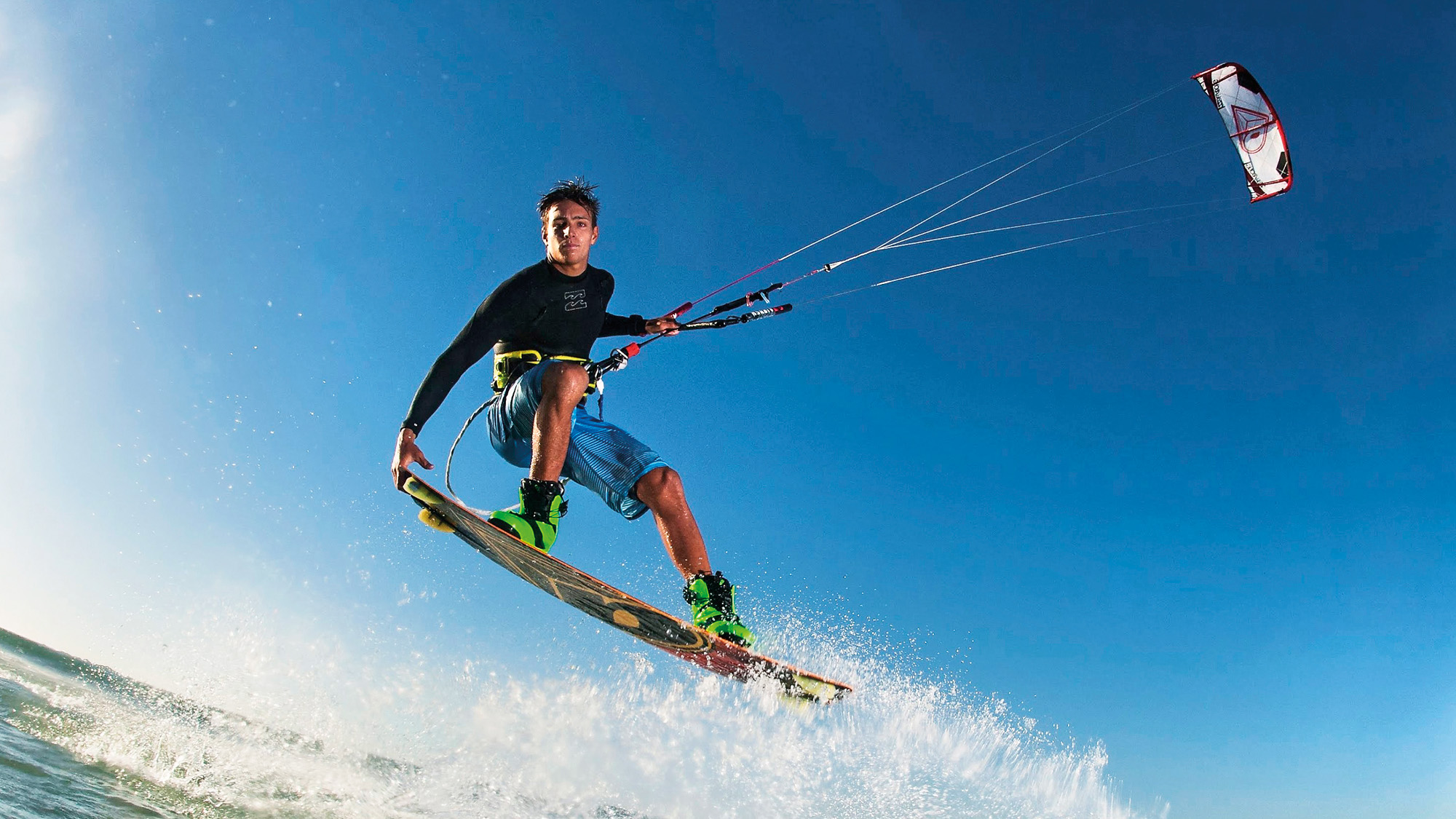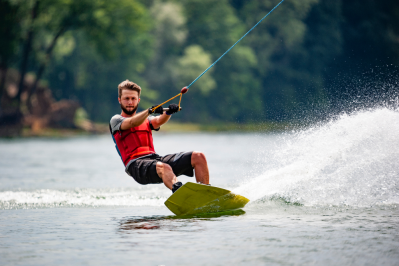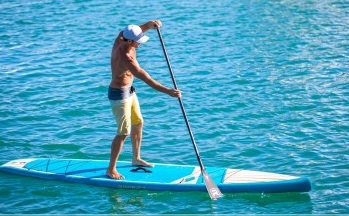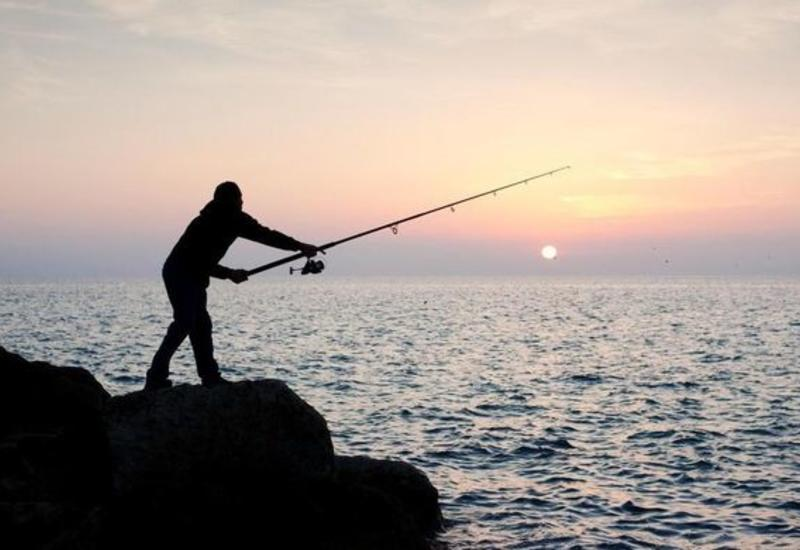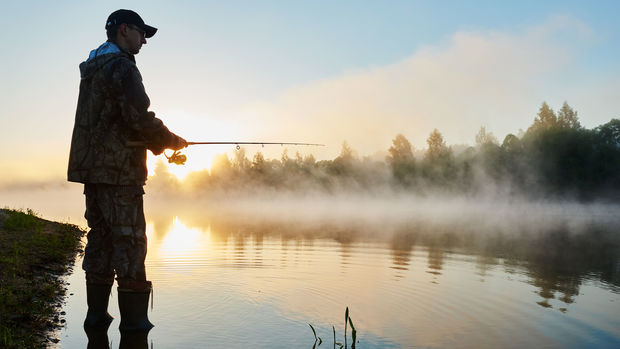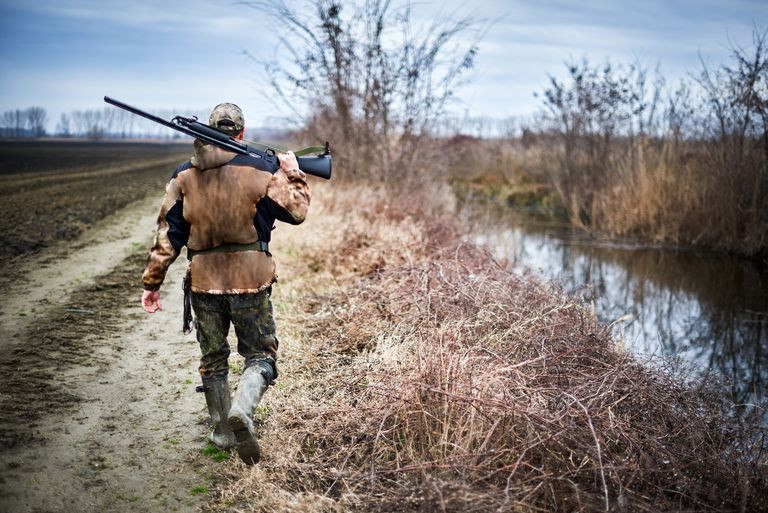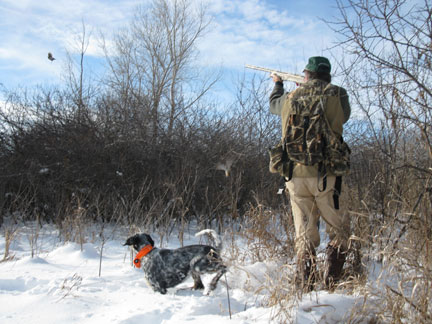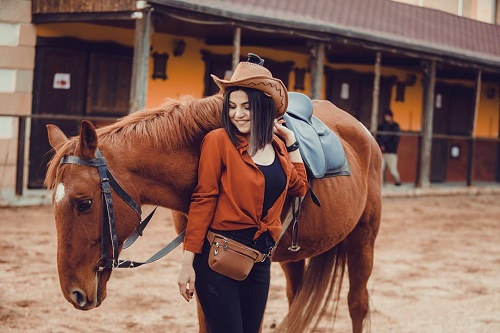Mountainous areas of Gusar and Gabala districts are ideal for those who want to enjoy real winter rest in Azerbaijan. International winter tourism resorts - Shahdag and Tufandag offer a full range of winter entertainment - from swift descents on skis and snowboards to leisurely walks in the surrounding hills and cable car trips.
Mountainous areas of Gusar and Gabala districts are ideal for those who want to enjoy real winter rest in Azerbaijan. International winter tourism resorts - Shahdag and Tufandag offer a full range of winter entertainment - from swift descents on skis and snowboards to leisurely walks in the surrounding hills and cable car trips.
Parachute jumps have recently become more popular in Azerbaijan. Within the framework of the FAIREX - Federation of Air and Extreme Sports, there are several specialized clubs (Gilavar, RockStone, Ecotourist) that will help everyone to experience the euphoria from skydiving. For beginners, there are single jumps and jumps paired with an instructor. Jumping, as a rule, is carried out in the Balakan Aviation Center, located in the city of Balakan, 394 km from Baku. International competitions are often held here.
Kelaghai is Azerbaijani women’s national headscarf made from fine and soft silk in a four-cornered shape. It is an integral part of women’s national costume in Azerbaijan. The colour of the headscarves has symbolic meaning often tied to specific social occasions such as wedding, mourning ceremony, daily activity or festivities.
Kelaghai, which is made by Azerbaijani craftsmen, has been known since the times of the Great Silk Road. In 2014, “Traditional art and symbolism of Kelaghai, making and wearing women’s silk headscarves” was inscribed on the Representative List of the Intangible Cultural Heritage at the 9th session of the Intergovernmental Committee for the Safeguarding of the Intangible Cultural Heritage.
Each region of Azerbaijan could boast their own production of kelaghai, which is inherent to this specific area and not similar to others. In the famous regions of Azerbaijan, such as Shirvan, Ordubad, Ganja, Sheki and Karabakh, the production of kelaghai was practically considered an obligatory work of each household. However, Basgal village is considered as the kelaghai making capital of Azerbaijan.
Making carpets has been a part of Azerbaijani culture since time immemorial. Carpets occupy a preeminent place among all the examples of Azerbaijani craftsmanship. The early emergence of the art of knotting carpets is tied closely to sheep raising traditions and the availability of natural dyes in the region – fig leaves for ochre colours, madder for reds, saffron for golden yellow hues, pomegranate peels for reddish browns. Carpet making in Azerbaijan is a family tradition transferred orally and through practice. Although carpets from the different regions of Azerbaijan are often very different in appearance, some characteristics are common to all Azerbaijani carpets – the designs do not take perspective into account and they do not have a background. The carpet artist brings all design elements into the foreground because all the figures are equally important.
Azerbaijani carpets are classified under four large regional groups, i.e. Guba, Shirvan, Ganja-Gazakh, Karabakh, and Tabriz.
Although Azerbaijani carpets can be found in the exhibitions of the Hermitage, the Victoria and Albert Museum in London, New York’s Metropolitan Museum, the Louvre and the Vatican, the biggest collection of Azerbaijani carpets are exhibited in the Azerbaijan Carpet Museum, which at the time of establishing, was the only museum that was dedicated to the art of carpet weaving.
Lahij is one of the most ancient villages in Azerbaijan. Lahij has long been famous as a handicraft centre, in particular for the preparation of highly artistic copperwares. The development of handicrafts here has left traces in the everyday life of the population and in the structure of the whole village, in the past as well as today.
Traditional methods of copperware production still survive in Lahij and copper production here has reached a high level of development. Moreover, coppersmiths from Lahij, many of whom resettled closer to the copper smelter, contributed significantly to the development of this field in many other areas of Azerbaijan and the whole Transcaucasia. The successful development of copperware production was favourable for the emergence of related handicrafts – tinning, blacksmiths work and charcoal production.
Copperware production was mainly concentrated in the Aghali Quarter of Lahij, which was so named because of the great number of copper workshops located on both sides of the ‘Misgar Bazari’ (Bazaar of Coppersmiths) street. Copperware was produced and sold in the workshops, the fronts of which functioned as shops. In 2015, the copper craftsmanship of Lahij was inscribed on the UNESCO Representative List of the Intangible Cultural Heritage.
Azerbaijani artist Sabir Chopuroglu isn’t the only artist to use oils in their work — but he may be one of the few to harness crude oil as an art form. Using his fingers to spread the oil on his canvas, Chopuroglu’s works echo traditional Azerbaijani motifs — often alongside symbols of the modern oil industry driving the country’s economy.
Each painting uses between 200-300g of oil, which Chopuroglu was once able to draw with a bucket from bubbling puddles in Baku’s Bayil district. Oil is not only the medium for Chopuroglu's paintings, but often the theme, as well. Derricks, oil workers, and the petroleum-rich Caspian Sea figure often in his paintings, along with other Azerbaijani cultural motifs like Baku's medieval Maiden Tower, Silk Road caravans, carpets, and traditional musical instruments.
Naftalan is a unique health resort of international importance as it is the only healing naphthalene oil field in the world. Naftalan is a rare naphthenic oil that in its appearance, scarcely differs from conventional industrial oils, however, its unique chemical composition affords it exceptional therapeutic qualities. With its biologically active substances, Naftalan harbours anaesthetic, anti-inflammatory, antiseptic, antihistamine and vasodilator properties that can be used to treat over 70 diseases, including: various skin conditions; musculoskeletal, gynaecological, urological, and ENT diseases; and issues with the nervous system and peripheral blood vessels. The climatic conditions of the resort contribute to the provision of medical care at any time of the year and offer a high therapeutic result.
For centuries, people around the world have benefited from the power of salt therapy and the positive effects it wields on aging skin, asthma, allergic reactions and respiratory problems. Many salt-based treatments, such as inhaling infused steam, are offered in health resorts and wellness centres all over Azerbaijan. It is a must-try! Delve into the natural salt caves found in Duzdag, where the underground tunnels have been converted into a leading therapy centre, welcoming guests with a wonderful team of physicians and physiotherapists.
Located 12 km from Nakhchivan, Duzdag is home to Azerbaijan’s most magical caves, 1,173 metres above sea level. Not only is the Salt Mountain made up of 130 million tons of some of the clearest and purest natural salt in the world, but it is also known to possess healing properties. The modern Duzdag Physiotherapy Centre is a work of art in its own right, tiled throughout with salt panels, air temperatures maintained at 18-20 degrees and humidity ranging between 24-50%. Duzdag is one of Europe’s top health centres for treating both allergies and pulmonary disorders (particularly asthma in children).
Hammams in Azerbaijan are places to gather, relax and socialise. In the heart of the city, any local will tell you that the Agha Mikayil, Agha Zeynal and Tezebay Hammams are the best spots to visit. While most public hammams are exclusively for men, some of them open doors to women several days a week.
The traditional Azerbaijani hammam experience entails completely immersing oneself in warm water before taking a steam bath, followed by a scrub-down – all of which are even more enjoyable in the colder months. All hammam procedures are usually followed by a tea ceremony with friends.
Azerbaijan can offer all manner of activities for all the family to enjoy. For those who love to run and want to Win the Wind, join thousands of athletes at the Baku half marathon – just do not forget to take in the spectacular views of the city as you go.
If you prefer to find your inner peace at a much slower pace, try a yoga class in some of the most exquisite landmarks the capital has to offer, such as the Seaside Boulevard or the Heydar Aliyev Centre. And just a short drive along the coast, the Baku Aquatics Centre awaits you with its world-class swimming pools where parents and children alike can get involved in aqua aerobics, water polo, synchronised swimming and just-for-fun competitions.
The inexhaustible natural resources of Azerbaijan, including the bioresources of the Caspian Sea, numerous rivers, lakes and reservoirs allow fishing almost at any time of the year. It should be noted that consent of the Ministry of Ecology and Natural Resources are required for fishing.
Pirallahi Island in the Caspian Sea, the sea area in Neftchala, Lankaran, Siyazan, Khachmaz (Nabran), the resources of the Kur River, the reservoirs in Mingachevir and the Shamkir Reservoir, private farms in the city of Shamakhi (Sakit Gol), etc. are among the popular fishing places. The area of the Khal-Khal waterfall in Oghuz should be specially noted. In Mingachevir, in addition to fishing on a bridge in the city center, you can organize private fishing in Kur River.
Wild animals and birds represented in the fauna of the rich and fertile land of Azerbaijan, including endemics (the Caucasian tur) can be objects for hunting. It should be noted that hunting on the territory of the country is allowed only during the hunting season, which is opened by the decision of the Ministry of Ecology and Natural Resources of Azerbaijan and in strictly established places, as well as in hunting farms in the regions of the country. Depending on the season, hunting wild boar, raccoon, fox, jackal, nutria, birds, etc. is common in Azerbaijan.
What can be fun and whip you into shape at the same time? Horse riding! Those of all ages are welcome to get involved, whether in an amateur polo competition, or on a peaceful ride through Baku (Elite Horse Club, Gunay Horse Club, etc.) or Sheki. Horse riding has been proven to wield both emotional and physical benefits, allowing visitors to get in touch with their natural surroundings – including with the horses themselves, whose rhythmic gait invites inner calm.















